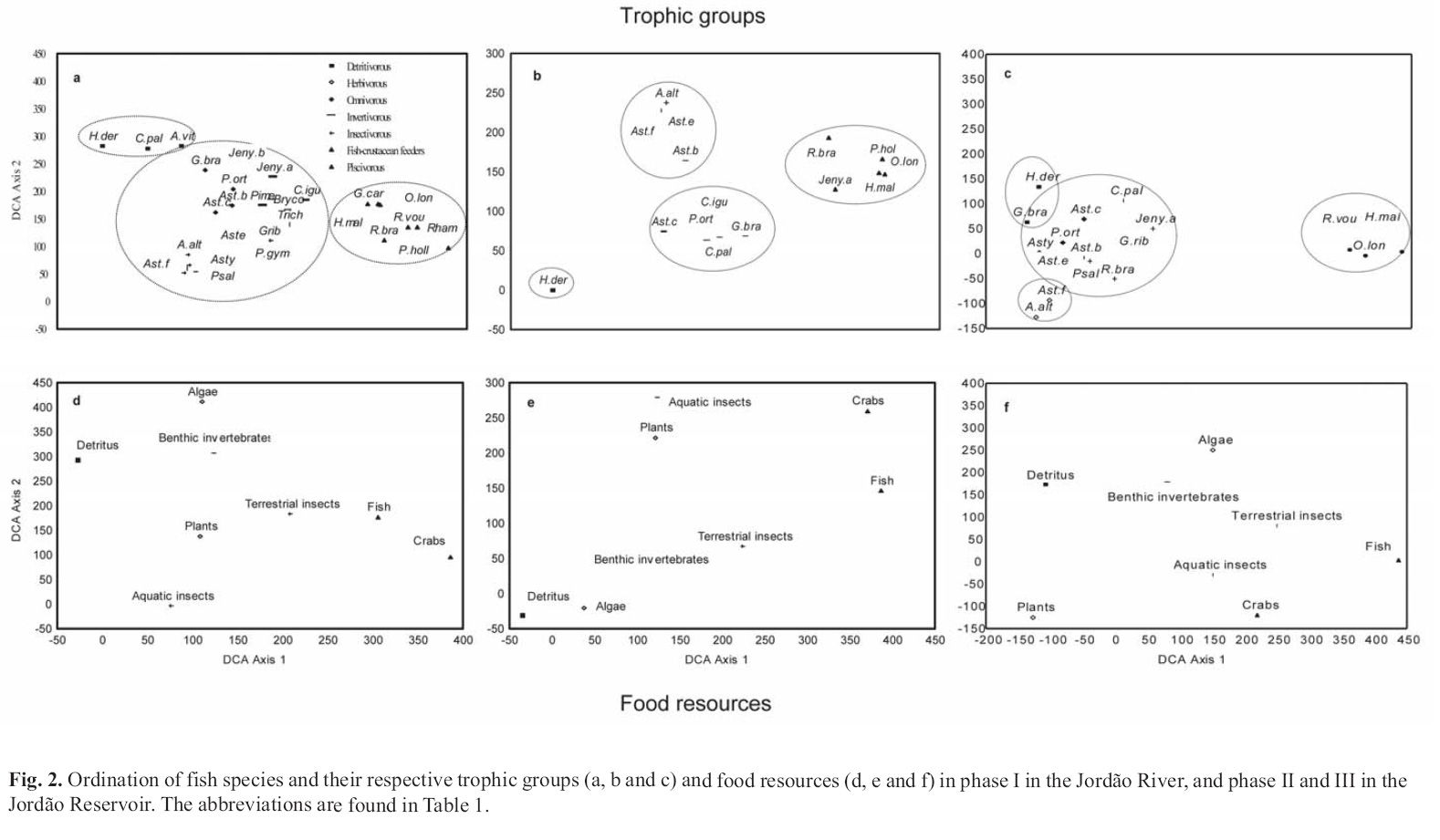The construction of dams brings about changes in the course of a river, which directly or indirectly affect the fish fauna. Alterations in the food resources available to the fish favor some species and deter others. In addition to the implications originating from damming, Jordão Reservoir has a characteristically large number of endemic species that, because of the impacts they have undergone, run the risk of extinction. In this study, we investigate the feeding flexibility of the fishes faced with alterations in the food supply through the assessment of the diet and trophic organization of the fish fauna (before and after the damming). Diet was determined analyzing 1,861 stomach contents from 27 fish species. Eight of this species were not caught after the damming. Detrended Correspondence Analysis (DCA) discriminated seven trophic groups. Omnivorous, insectivorous and invertivorous species had more temporal alterations in their diets. These changes altered the composition (in abundance and biomass) of the trophic groups, mainly after the damming. The detritivorous and piscivorous species maintained their diets during all study period. Analyses showed that about 75% of the species quickly changed their diets according to alterations in food supply. This implies that food is not a limiting factor (at first) for the maintenance of fish fauna of this reservoir, at least for the species that persisted after the filling.
Fish diet; Feeding flexibility; Resources availability; Impacted environment




